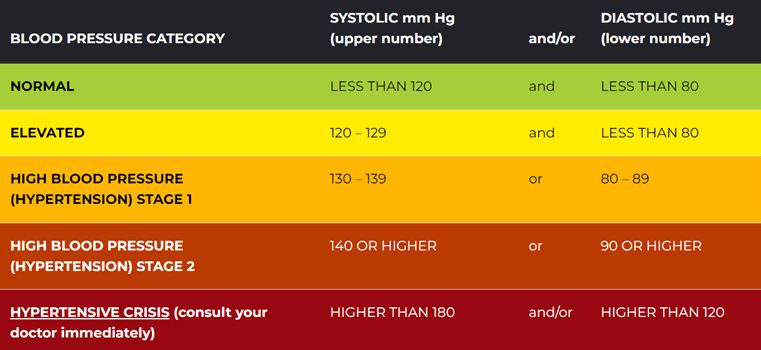February is American Heart Month, a time to focus on heart health and the importance of knowing your numbers.
Established by President Lyndon B. Johnson in December 1963, American Heart Month was created to address the nationwide problem of heart and blood-vessel diseases. President Johnson urged the American people to support programs aimed at finding solutions to these issues, marking a significant point in the nation’s approach to cardiovascular disease. Despite progress, the struggle against heart disease continues.
Today, many Americans are unaware that they have high blood pressure, a condition that can lead to serious health problems if left unchecked. Being proactive and knowing your numbers can help you stay healthier and live longer. According to the Centers for Disease Control and Prevention (CDC), nearly half (48%) of adults have high blood pressure, but less than a quarter (22%) of adults with high blood pressure have their condition under control. Known as the “silent killer,” high blood pressure can increase the risk of heart disease, heart failure, and stroke.
Related: Every Second Counts: How to Perform Hands-On CPR
Blood Pressure: What to Know
Blood pressure readings can be confusing, but the AHA provides guidelines to help you understand them. Blood pressure is recorded as two numbers:
- Systolic blood pressure (the first or top number) indicates how much pressure your blood is exerting against your artery walls when the heart beats.
- Diastolic blood pressure (the second or bottom number) indicates how much pressure your blood is exerting against your artery walls while the heart is resting between beats.

The AHA also offers resources on blood pressure monitoring, including self-monitoring at home, wellness tips, and ways to increase physical activity for a healthier lifestyle.
Related: 10 Powerful Superfoods to Try This Year and Cozy Cardio May Be Your Perfect Workout
More Numbers to Know
The American Heart Association (AHA) emphasizes the importance of knowing not only your blood pressure but also your cholesterol and blood sugar levels.
That’s because blood pressure, cholesterol and blood sugar levels all contribute to heart disease and impact your cardiovascular health. While many people know that high blood pressure and high cholesterol are risk factors for heart disease, it’s less known that high blood sugar can damage blood vessels and nerves that control the heart. The CDC states that people with Type 2 diabetes are twice as likely to develop and die from cardiovascular disease compared to those without diabetes.
Heart Disease in the United States
The CDC shares some important statistics about heart disease:
- Heart disease is the leading cause of death for men, women, and people of most racial and ethnic groups in the United States.
- One person dies every 33 seconds in the United States from cardiovascular disease.
- About 702,880 people in the United States died from heart disease in 2022—that’s 1 in every 5 deaths.
- Heart disease cost the United States about $252 billion each year from 2019 to 2020, including health care services, medicines, and lost productivity due to death.
It’s crucial to have annual physicals and regular check-ins with your doctor to ensure your health is the best it can be. Knowing your numbers is essential for a healthy life. Knowledge is power when it comes to your health, so staying informed is key.
Want more? Check out our blog, 6 Healthy Habits of Super Agers
We’re Here for You
Bankers Life is here to help customers with their financial and insurance needs so please visit us at BankersLife.com to learn more.



